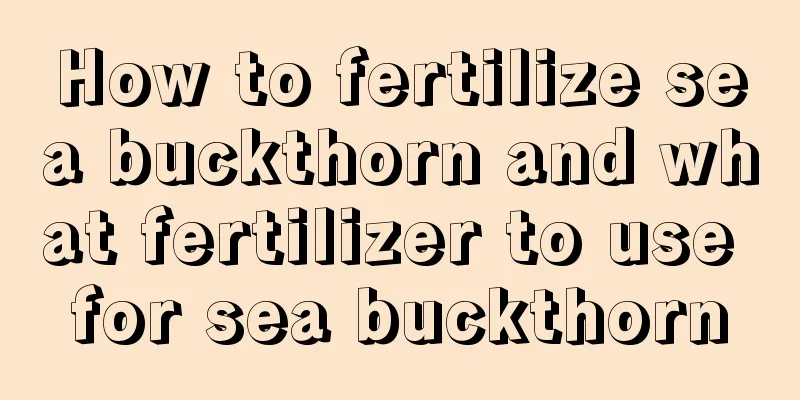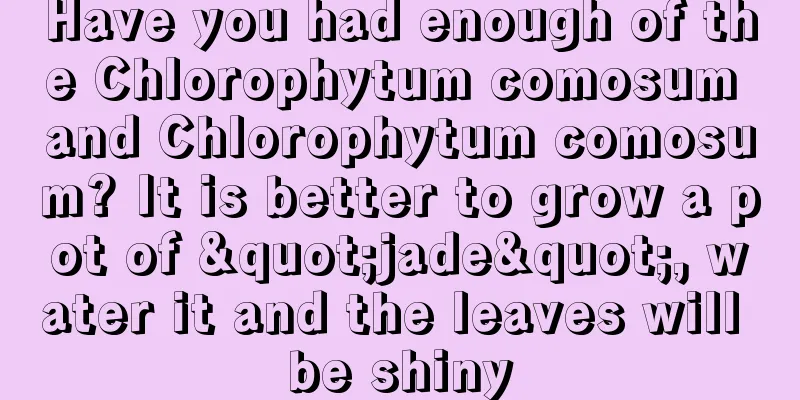How to fertilize sea buckthorn and what fertilizer to use for sea buckthorn

1. Base fertilizerWhen planting sea buckthorn, base fertilizer should be applied first. The purpose of base fertilizer is to continuously provide nutrients, so organic fertilizer with longer fertilizer effect is often used. The fertilizer must be fully decomposed. If it is fermented in the soil, it will burn the roots of the plants. Generally, base fertilizer needs to be supplemented every 2-3 years, with 3000-4000 kg applied per mu. 2. Topdressing1. Growth period: During the growth period of sea buckthorn, topdressing is needed in time. At this time, fertilization is mainly to promote the growth of the plant and the development of branches and leaves, so nitrogen fertilizer is mostly used. Common nitrogen fertilizers include urea and ammonium bicarbonate. Generally, 200-400 grams of urea are applied per plant, and 200-300 grams of ammonium bicarbonate are required per plant. 2. Bud stage: Sea buckthorn will bloom in summer. If there is insufficient nutrients, flowering will be delayed or the flowers will fall, which will also reduce the fruit setting rate. Therefore, phosphorus fertilizer should be supplemented during the budding period. Generally, superphosphate is used, and 200-300 grams should be applied per plant. At the same time, potassium fertilizer should be supplemented, only 100-200 grams per plant is needed. 3. Fruiting period: After the sea buckthorn grows fruits, appropriate fertilizer is also needed to promote its growth. Fertilization during the fruit-bearing period is similar to that during the budding period, and is also mainly based on phosphorus and potassium fertilizers, and quick-acting fertilizers are mostly used. In addition, you can also spray it with fruit-enhancing agent, which can make the fruit swell better. 4. After picking: Sea buckthorn needs to consume nutrients to bloom and bear fruit, so appropriate fertilizer is needed after picking to replenish the nutrients lost before. At this time, organic fertilizer is mostly used. Since the climate has turned cold and the plants are not growing fast, using quick-acting fertilizer may cause fertilizer damage, so applying organic fertilizer is very good. |
<<: Which month is best for transplanting peonies?
>>: Eggplant planting methods and management points
Recommend
Cultivation methods and precautions of Thousand-petal sunflower
Ecological habits It is an annual herb. The leaf ...
Placement of the Jade Leaves
1. Sunlight Jade Plant loves sunlight very much. ...
How to repot Christmas cactus
1. Time You can repot Christmas cactus around Mar...
How to grow soilless green radish more vigorously
Green ivy has good adaptability and does not have...
How to prune Milan and the time and method of pruning
Milan pruning time In fact, there is no fixed pru...
Do hydrangeas prefer shade or sun?
Do hydrangeas prefer shade or sun? Hydrangea is v...
Common diseases of Clerodendrum thomsoniae and their control methods
Common diseases of Clerodendrum thomsoniae: leaf ...
Cultivation methods and precautions of iron plum blossom
1. Breeding methods 1. Water: It prefers a moist ...
How to water Phoenix bamboo
Different seasons require different watering meth...
What vegetables are suitable for growing in Tianjin?
What vegetables are suitable for growing in Tianj...
What is the best month to plant chayote?
When to plant chayote Chayote is usually planted ...
Cultivation methods and precautions of jade ornaments
The succulent plant Jade Pendant is not only beau...
The Feng Shui Effect of the Fortune Tree
1. Place it in the living room The fortune tree i...
How to trim Dutch iron
Dutch Iron Pruning Reasons The leaves of Dutch ir...
Can I grow a fig tree at home?
Can I grow a fig tree at home? Fig trees can be p...









